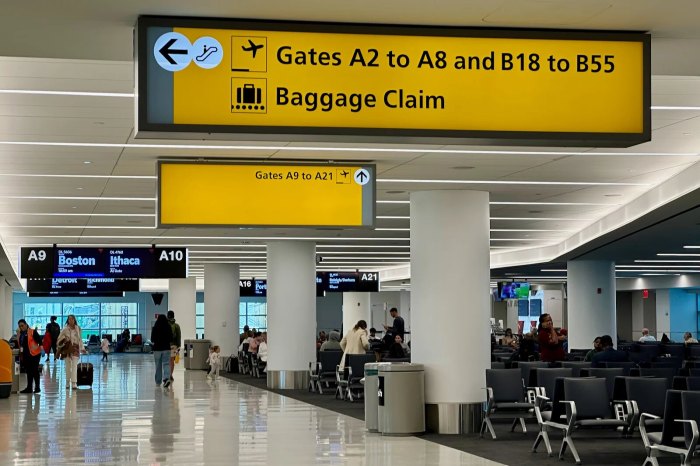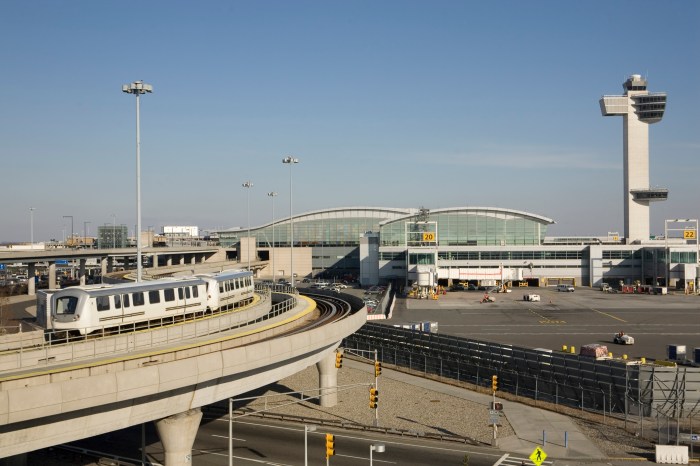By Philip Newman
MTA officials describe their financial plight as fraught with risk, although Chairman Joseph Lhota says he is more optimistic now than when he took over the transit agency six months ago.
Lhota said he is, however, concerned over the “long-term trend in our expenses.”
In any case, the Metropolitan Transportation Authority plans a 7.5 percent fare hike for riders of buses, subways and commuter railroads early next year. The fare increase would bring in $450 million annually. The basic fare is now $2.25 before special discounts.
“I have to emphasize this is a risk-laden plan,” Chief Financial Officer Robert Foran told an MTA board meeting July 25 in an exhaustive review of the 2013-16 financial plan.
“We have to continue to reduce costs,” Foran said. “We cannot let up.”
Foran said the MTA might ease through the financial peril, but only “if everything falls into place.”
That might be easier said than done.
For instance, a vital part of the plan is called Net Zero, which means persuading the 36,000 workers represented by the Transport Workers Union to give up a pay raise for three years.
“If we don’t get this one thing — the Net Zero labor settlement — our deficits increase by [more than $1 billion] through this forecast period, money that has to be made up someway, somehow,” Foran said. The forecast period is four years.
In that case, more than likely the cash shortage would be made up by transit fare hikes higher than the now-planned 7.5 percent increase next March, as well as raises in 2015 and probably 2017.
The contract between the MTA and the Transit Workers expired in January. Negotiations between the union and the MTA are going on.
But the financial picture is not entirely bleak. The MTA got a financial break with a surge in subway riders, now near the record set in the early 1950s, as the cost of energy to propel buses, subways and trains fell.
On the other hand, pension costs and workers’ compensation claims rose.
As to the MTA’s announcement of the coming restoration of bus routes eliminated or diminished in 2010, Lhota said “we wanted our riders to know we are listening to them.”
Many of the 22 public speakers at the meeting praised and thanked the MTA for its plans to restore bus routes. Some also mentioned routes they said need to be brought back.
The MTA estimates bringing back the eliminated bus routes and introducing some new ones will cost $29.5 million annually.
Queens bus routes slated for restoration and when they will be effective are as follows:
• Q24: restores extension from Broadway Junction to Bushwick Avenue via Broadway. Serves East New York and Bushwick. January 2013.
• Q27: provides overnight service from Horace Harding Expressway to Cambria Heights via Springfield Blvd. Serves Queens Village and Cambria Heights. January 2013.
• Q30: provides service to Queensborough Community College. January 2013.
• Q36: extension of every other trip from Jamaica Avenue to Little Neck via Little Neck Parkway, restores weekday service along route of previous Q79. Serves Floral Park, Bellerose, Glen Oaks and Little Neck. January 2013.
• Q42: restores mid-day service from Jamaica Center to St. Albans. Serves Jamaica and Addisleigh Park.
• Q76: restores Saturday service and adds Sunday service from Jamaica to College Point via Francis Lewis Boulevard. Serves Jamaica, Jamaica Estates, Fresh Meadows, Bayside, Whitestone and College Point.
In other transit news:
• The MTA financial plan includes adding a $1 surcharge on the purchase of MetroCards with no information yet on when the so-called Green Fee might become effective. Transit officials said the surcharge should reduce the number of expired MetroCards, which are discarded and litter the floors of subway stations.
Reach contributing writer Philip Newman by e-mail at timesledgernews@cnglocal.com or phone at 718-260-4536.



































